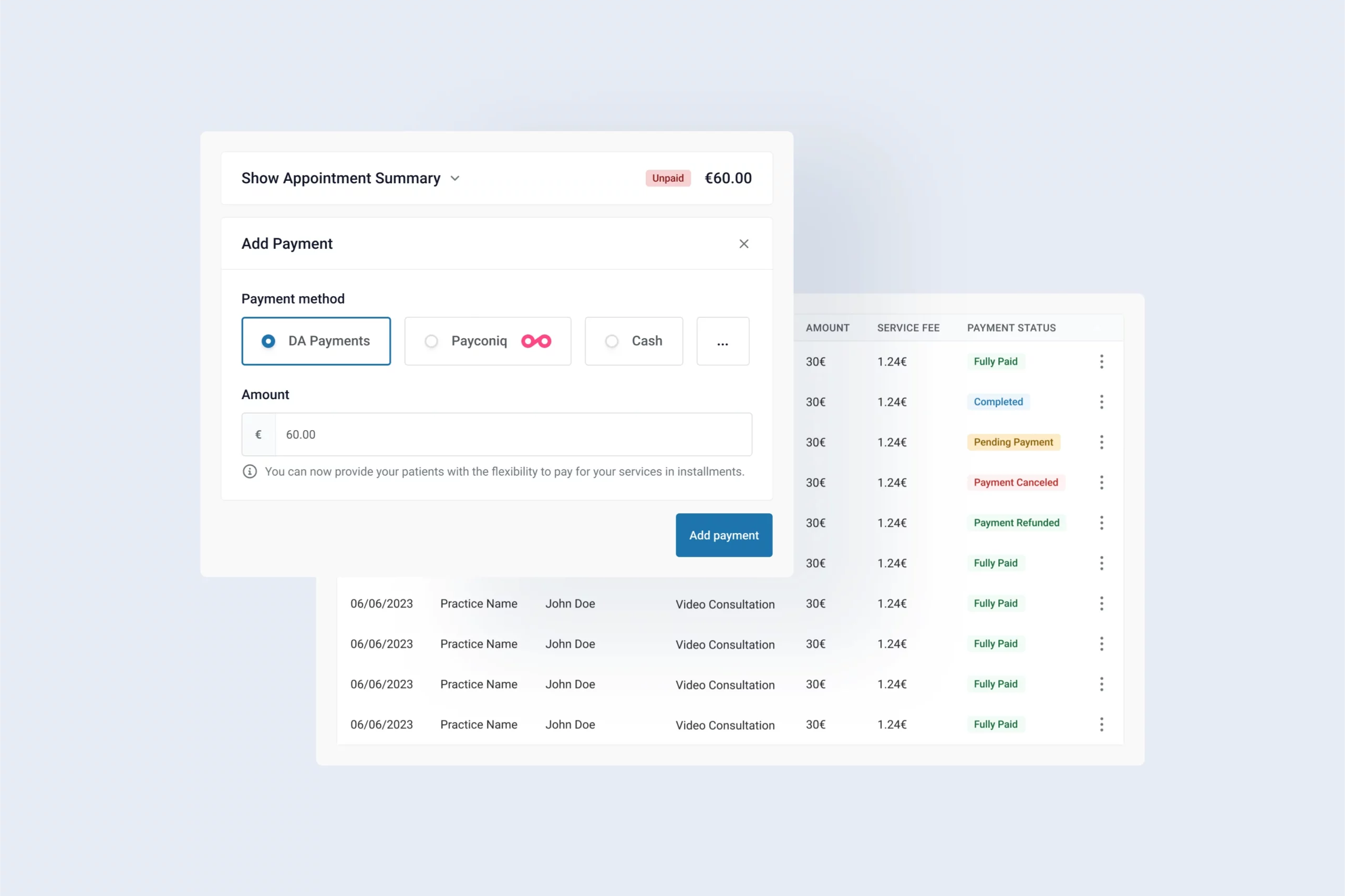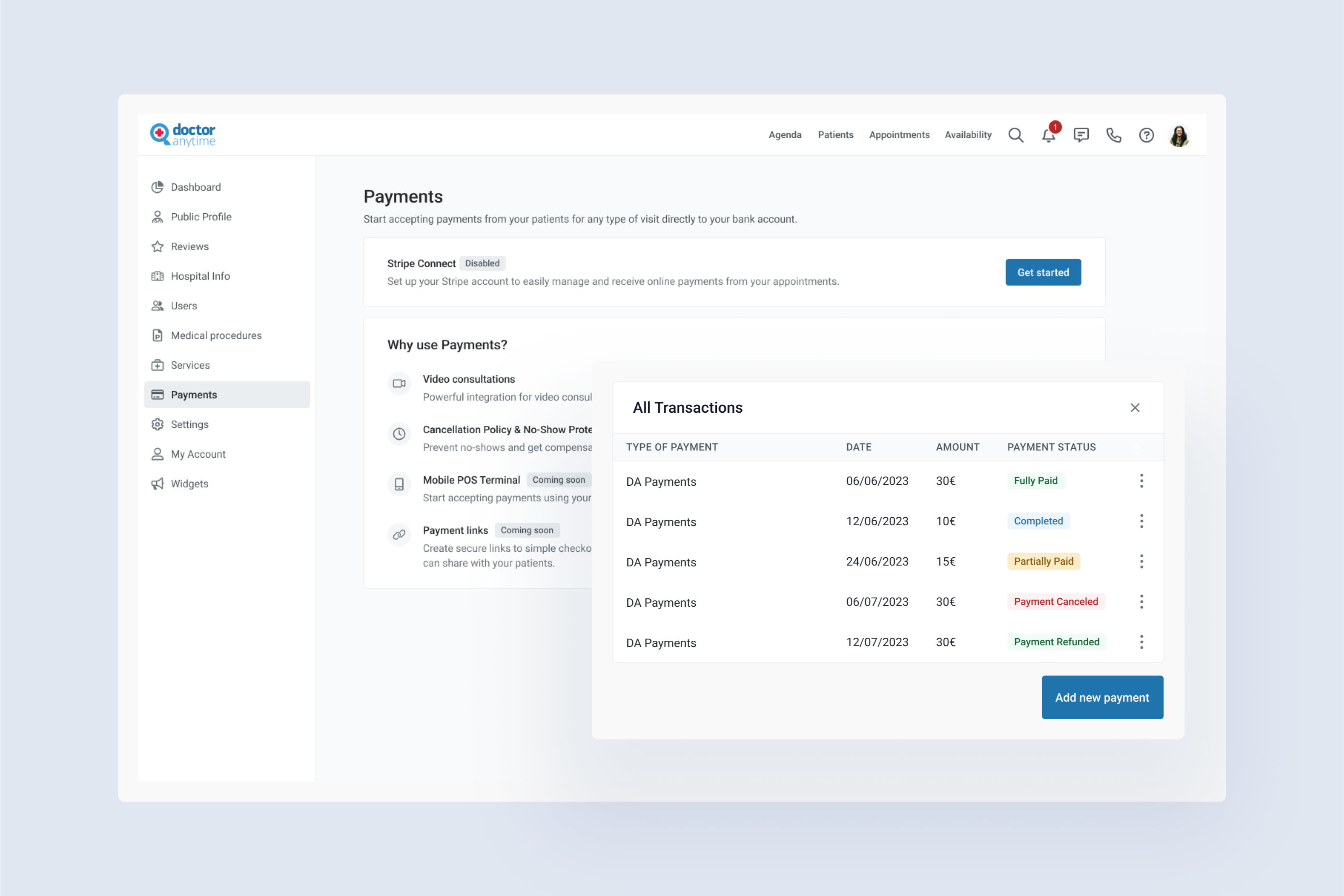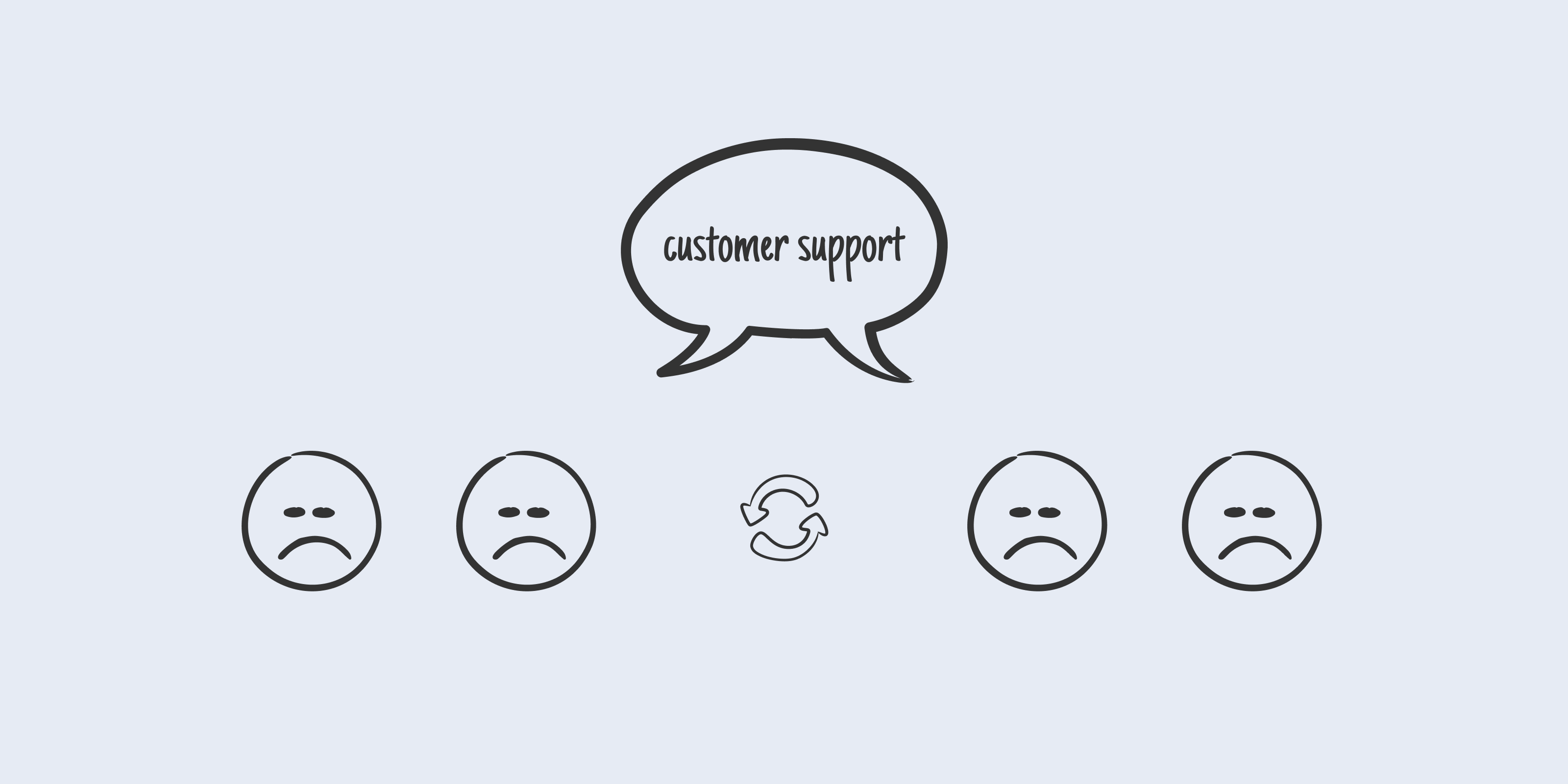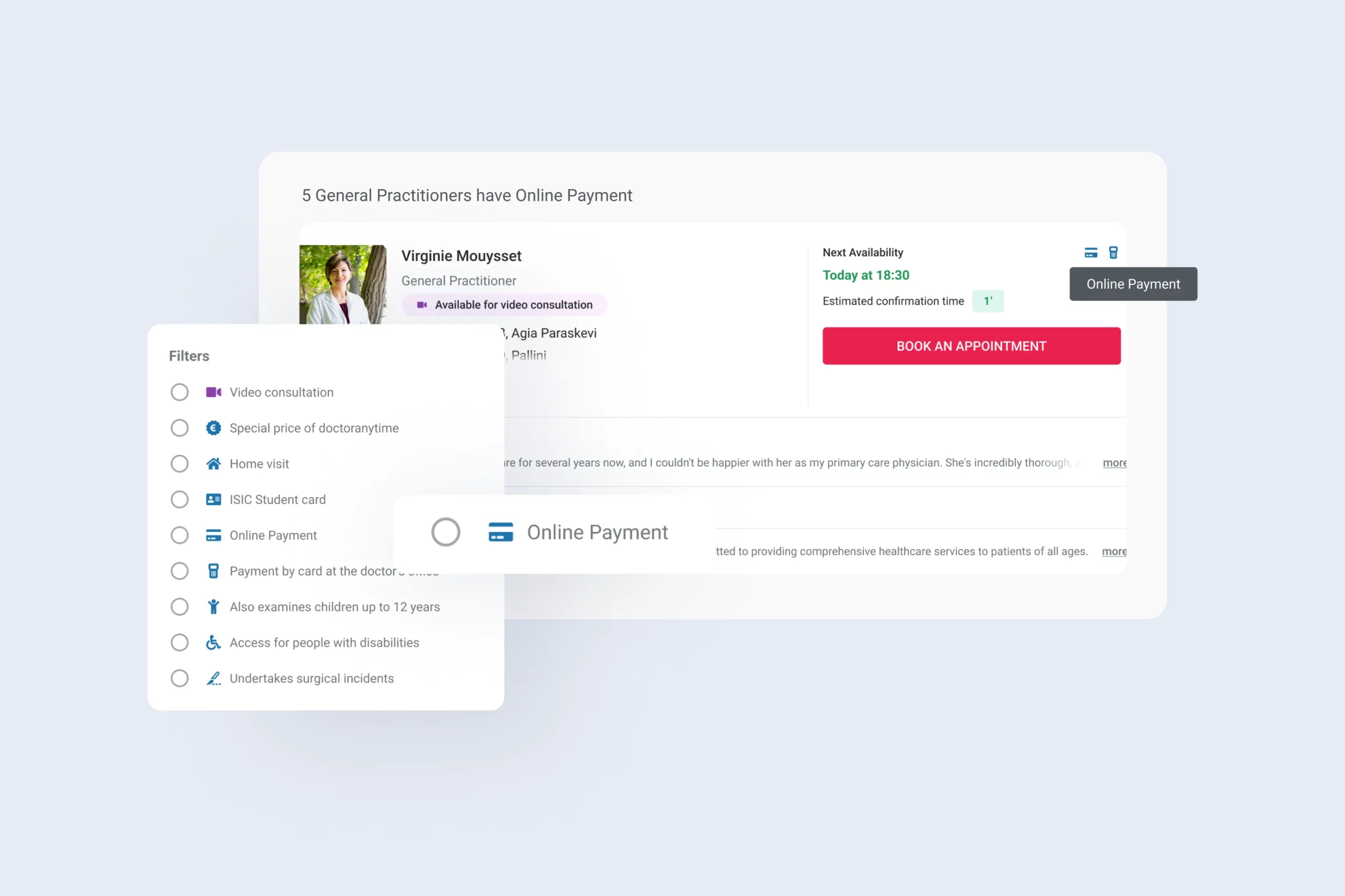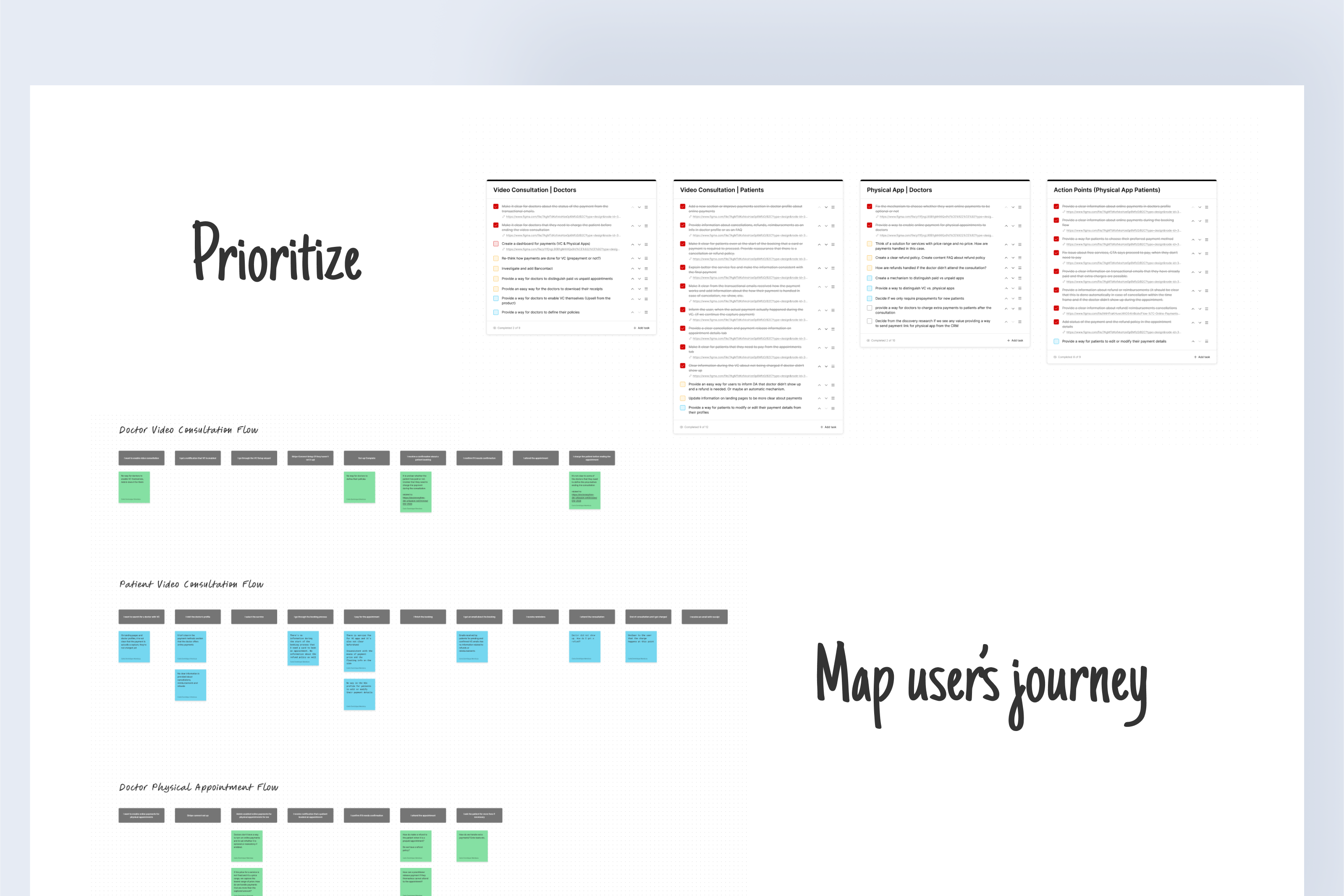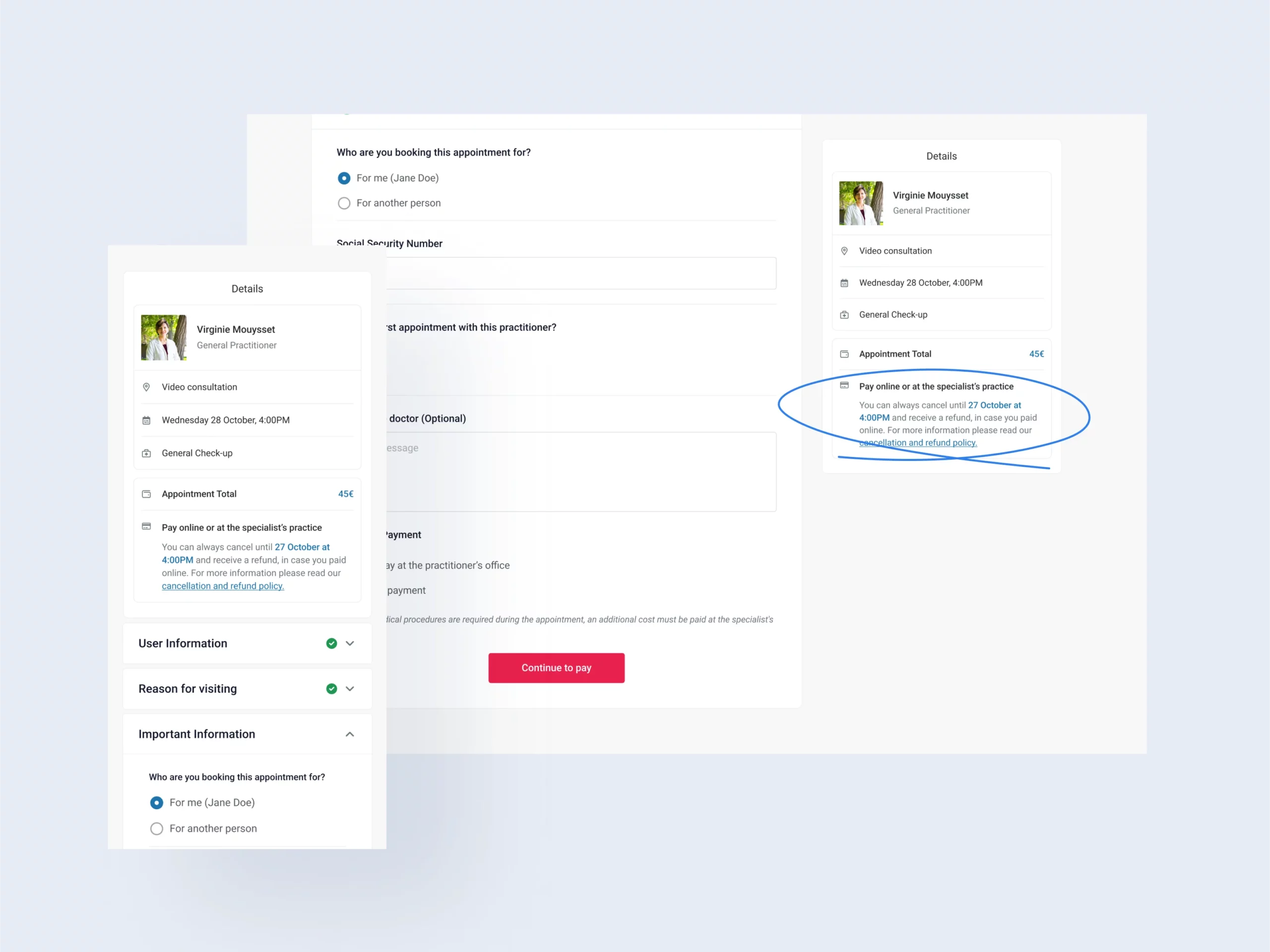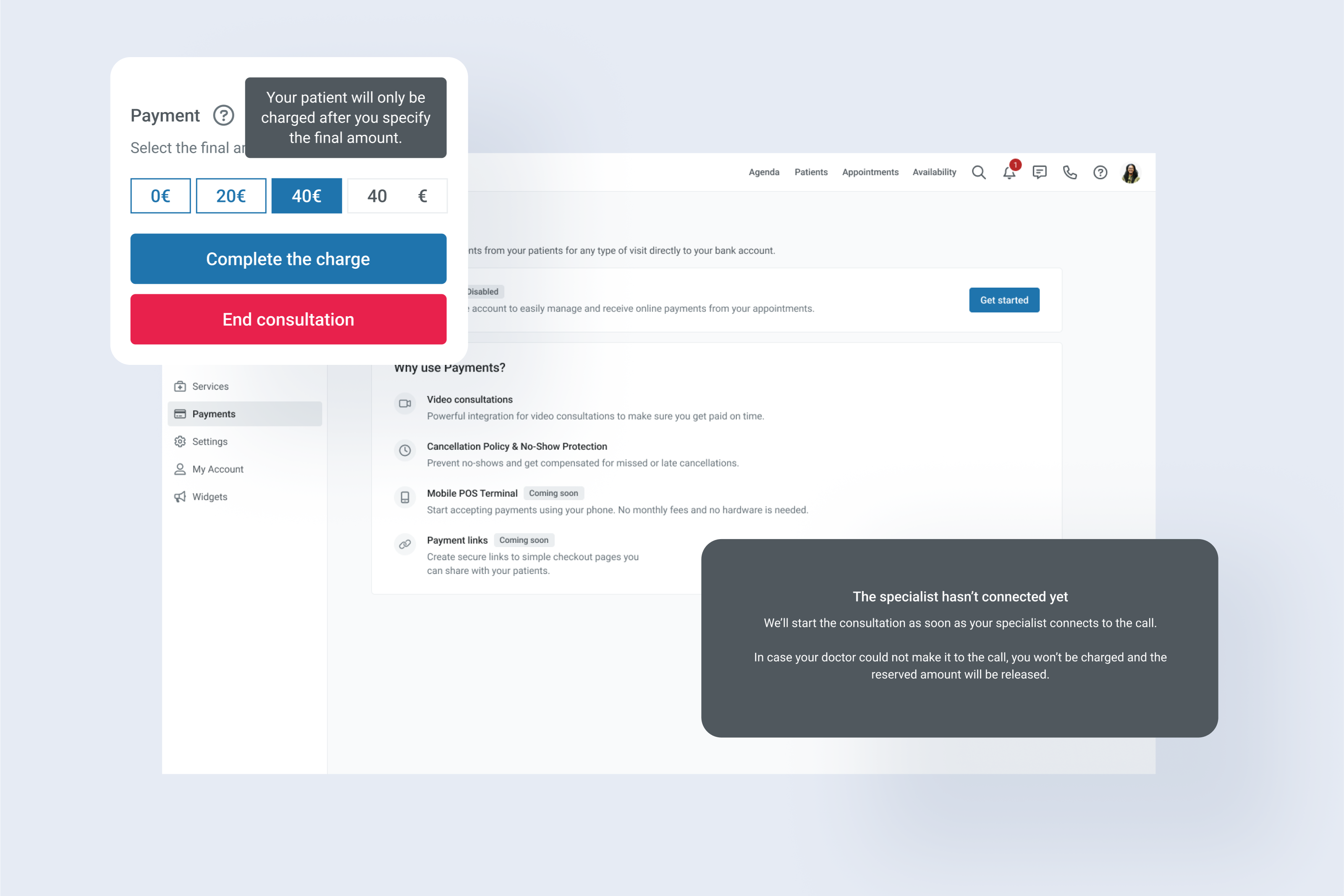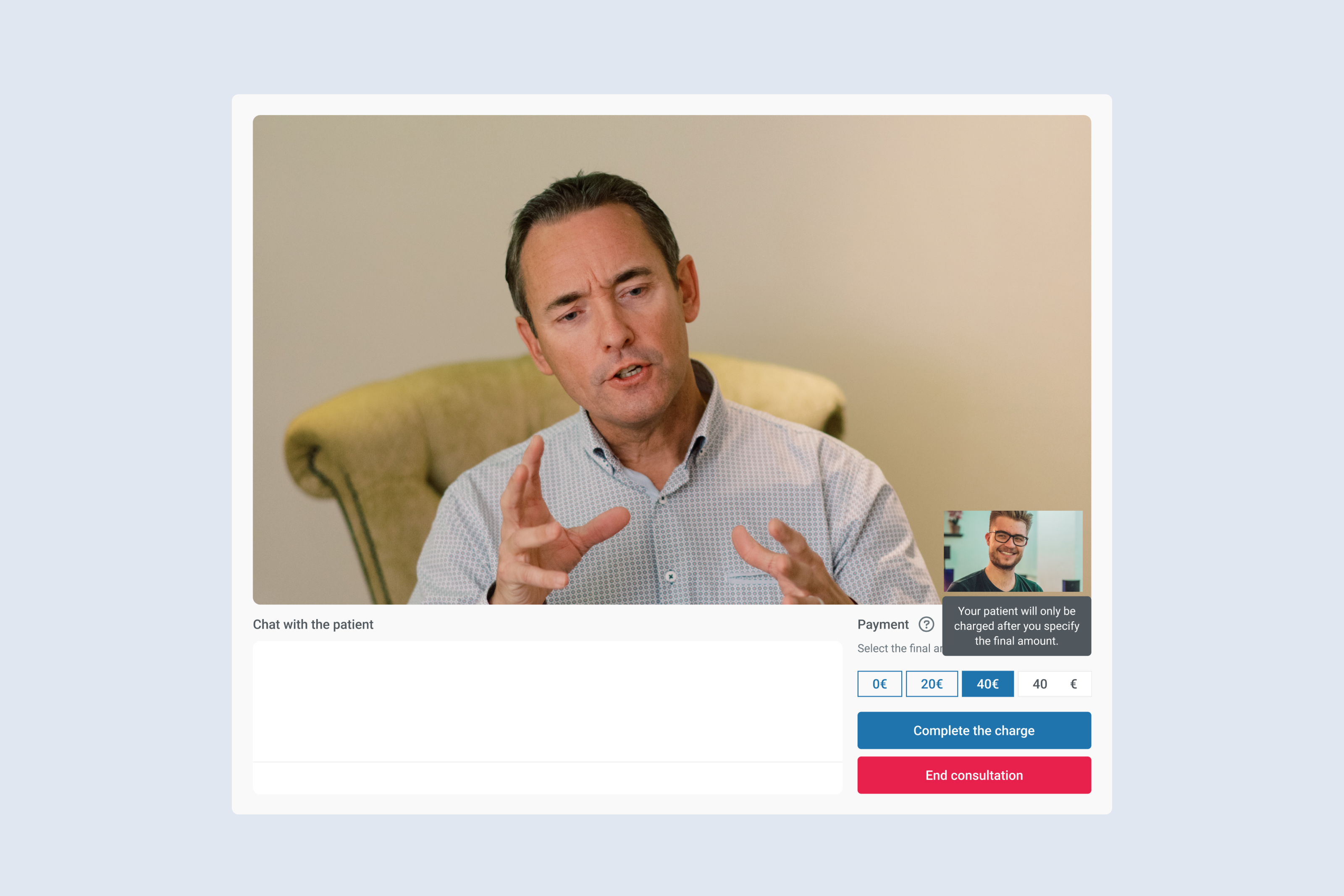Case Study: Quickly Changing and Improving Healthcare Payment Solutions
OVERVIEW
Doctoranytime is a leading health tech company in Greece, Belgium, and expanding in LATAM. They assist people daily in finding the right medical services, offering guidance on health matters and connecting them with the right practitioners conveniently.
Our team's mission is to discover and deliver ways to increase the company's revenue.
I took charge of research and design for this mission. The research I did proved that there is a need to pivot to a better solution – a faster and more efficient way to help practitioners.
HIGHLIGHTS
The pivot doubled the revenue from video consultations.
The research discovery plan saved us from potentially spending months or years on development and thought us to focus on more pressing concerns.
My Role
Product Designer
Team
Product Manager
Product Designer
Tech Lead
Back-end Developer
Front-end Developer
UX Writer
Process
Competitor Analysis
Surveys
Semi-Structured Interviews
Quantitative Data Analysis
Heuristic Evaluation
Ideation
Prototyping
Usability Testing
Evaluation
Tools
Figma
Figjam
Miro
Notion
Google Analytics
Gmeet
Grain
Hubspot
Typeform
CONTEXT
There were complaints from practitioners about patient no-shows and last-minute cancellations.
Our hypothesis? Expanding online payment options to include physical appointments and asynchronous services would enhance patient convenience, boost practitioner productivity, and drive higher adoption rates and revenue growth.
MEASURE
To assess our product's success, we considered metrics such as:
Revenue from online patient payments, the number of appointments paid online, the ratio of online payments to total appointments, and healthcare practitioners’ revenue growth through online payments.
DESIGN PROCESS
Create a Research Discovery Plan
I crafted a research plan focused on practitioners’ preferences for online payments on Doctoranytime, aligning it with our revenue growth objective. We kicked off our investigations in our primary domain, where most doctors scheduled appointments for their patients. A selected group of practitioners underwent hypothesis testing to eliminate potential payment issues.
Analyze User Insights and Mitigate Bias
Building upon prior research conducted three years ago, I designed survey questions and conducted follow-up interviews. Our aim? To mitigate biases by actively listening to our users’ perspectives.
Maximize Timeline Efficiently
Simultaneously, we analyzed the current payment flow within the platform, enhancing usability and integrating features aligned with our survey findings. Practitioner usability testing followed interviews, accelerating our results.
Mobile payment
80.3% of the respondent practitioners already have mobile payments in Belgium through Payconiq.
No-show policy
50.5% of them have no-show policy in place.
Prepayments
Low number of practitioners need prepayment. Prepayments are only needed for new patients.
Relationship
Strong patient professional relationship. The practitioners trust their patients.
KEY DISCOVERY
Online payments proved highly effective for specific practitioner types but were not universally applicable.
- The window of opportunity for mobile payments had passed, making it less impactful.
- About half of the doctors already had established no-show policies, providing an opportunity for compensation streamlining.
- Prepayments are primarily for new patients via Doctoranytime, helping to dodge cancellations and no-shows.
- Doctors trust their regular patients and are content with bank transfers for services like Prescription renewal.
PIVOT
A compelling need for another payment solution did not surface, leading us to focus on optimizing the existing payment flow.
Initially, there wasn’t a compelling need for yet another payment solution, so we shifted our focus to optimizing the existing payment process. The question that arose was, what could we do to assist practitioners who displayed a keen interest in online payments without investing heavily in development?
SOLUTION
A solution to offer cheaper options for card payments
Nearly half of our survey participants, precisely 44.6%, are worried about the expense associated with our payment solution. To address this concern, we’re exploring the possibility of leveraging Stripe’s mobile POS terminal, which comes at a more affordable package cost. This solution is high on our priority list for the future.
A solution to utilize existing payment solution
We contemplated utilizing our current payment solution. Could it suffice for practitioners in need of online payment capabilities? Our strategy involved rolling it out to all practitioners while ensuring they were well-informed about its advantages.
Take a Step Back
However, we couldn’t ignore the existing issues within our payment system. I revisited the stakeholder survey and support tickets to identify the reported issues. By pinpointing the most problematic stages in the user journey, I created a priority table for discussion with the team to determine our focus areas.
Evaluate new discovery
Three critical insights emerged. First, practitioners were unaware of the need to manually charge patients at the end of a video consultation. Second, patients believed they had already prepaid their appointments. Third, patients in Belgium have issues paying with a card with the current payment system we have.
DESIGN
An optimized payment flow for patients
To address these issues, I designed an improved payment process for patients, incorporating new payment information into the existing search and booking procedure to educate patients about their payment options.
A clearer Interface for Practitioners
I revamped the practitioner interface, making it more intuitive and providing prompts in case a practitioner closed the web browser without completing the payment process.
NEW INTEGRATION
Easier payments for patients in Belgium
The card payment issues they were having was solved by integrating Bancontact on our means of payment.
IMPACT
Increased the revenue from Video Consultations by 100%
The updates on the video consultation payments flow and the new integration doubled the revenue coming from video consultation bookings.
NEXT STEPS
- Monitor the number of practitioners showing interest from the payments tab
- Explore the possibility of instant payments
- Dive more into mobile POS through Stripe to offer cheaper options for doctors to accept payments
RETROSPECTIVE & LESSONS LEARNED
Looking back, here are some learnings:
- We recognized the importance of embracing ambiguity and fostering creative problem-solving within practical constraints. Designing without clear constraints proved to be a mistake that extended our timeline.
- Engaging our tech team members early in the process became essential to consider the entire user flow comprehensively. Despite conducting a thorough examination of the current flow, some technical nuances only surfaced when a more technically inclined team member was involved.
- We acknowledged that embracing “failure” as a stepping stone to rapid iteration and continuous improvement was crucial. Failure is inevitable, especially in product development, but it’s an integral part of the learning process.
- This project also highlighted the significance of managing design debts. We realized that using outdated and inconsistent design elements, despite the existence of a more current design system, was inefficient. We learned the importance of early discussions with the team to emphasize the need for minimizing design debt for long-term efficiency.
-
Since the new update has been rolled out to all users, we could have reduced the risk of impacting important metrics like conversion rate by conducting an A/B test before the release.
